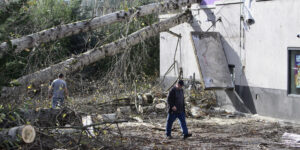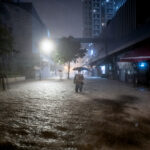 The Sept. 17-18 bomb explosions in New York and New Jersey will have implications for the modeling of terrorism risk due to a shift in tactics, according to an expert with catastrophe modeling firm RMS.
The Sept. 17-18 bomb explosions in New York and New Jersey will have implications for the modeling of terrorism risk due to a shift in tactics, according to an expert with catastrophe modeling firm RMS.
RMS’s Gordon Woo said that the types of attacks that took place could affect future modeling of terrorism risk.
“From what is known about the improvised explosive devices (IEDs), the cumulative death toll from these bombs might well have exceeded 50, which is the threshold for classification as a ‘macroterror’ attack in RMS models,” Woo explained in prepared remarks.
He added that “a key statistic for terrorism insurers is the relative frequency of small IED plots compared to large vehicle bomb plots.”
With that in mind, the weekend’s bomb explosions give modelers “additional evidence to quantify this relative frequency, and in particular, it reflects a shift toward smaller sized IEDs.”
No one died in the blasts in Manhattan’s Chelsea neighborhood and Seaside Park New Jersey, though the New York explosion caused a number of injuries. Officials also discovered other unexploded, homemade bombs, some of which were made with pressure cookers and Christmas lights. Police apprehended the New York bombing suspect after a shootout in New Jersey on Monday, Reuters reported.
Woo said that more than 20 terrorist plots in and around New York have been stopped since the Sept. 11, 2001 attacks. He noted that since the new explosions were not stopped in time, this “will be a concern to New Yorkers and visitors.”
Source: RMS
*Material from Reuters was used in this story





















 How We’re Doing It: Boosting Corporate Culture and Customer Experience
How We’re Doing It: Boosting Corporate Culture and Customer Experience  Rising Civil Unrest, Political Violence Remain Top 10 Risk for Global Businesses: Allianz
Rising Civil Unrest, Political Violence Remain Top 10 Risk for Global Businesses: Allianz  Is State Farm General a Sinking Ship? California Emergency Rate Request Dropped to 17%
Is State Farm General a Sinking Ship? California Emergency Rate Request Dropped to 17%  AI Weather Models Promise Super Granular, Specialist Forecasts
AI Weather Models Promise Super Granular, Specialist Forecasts 







